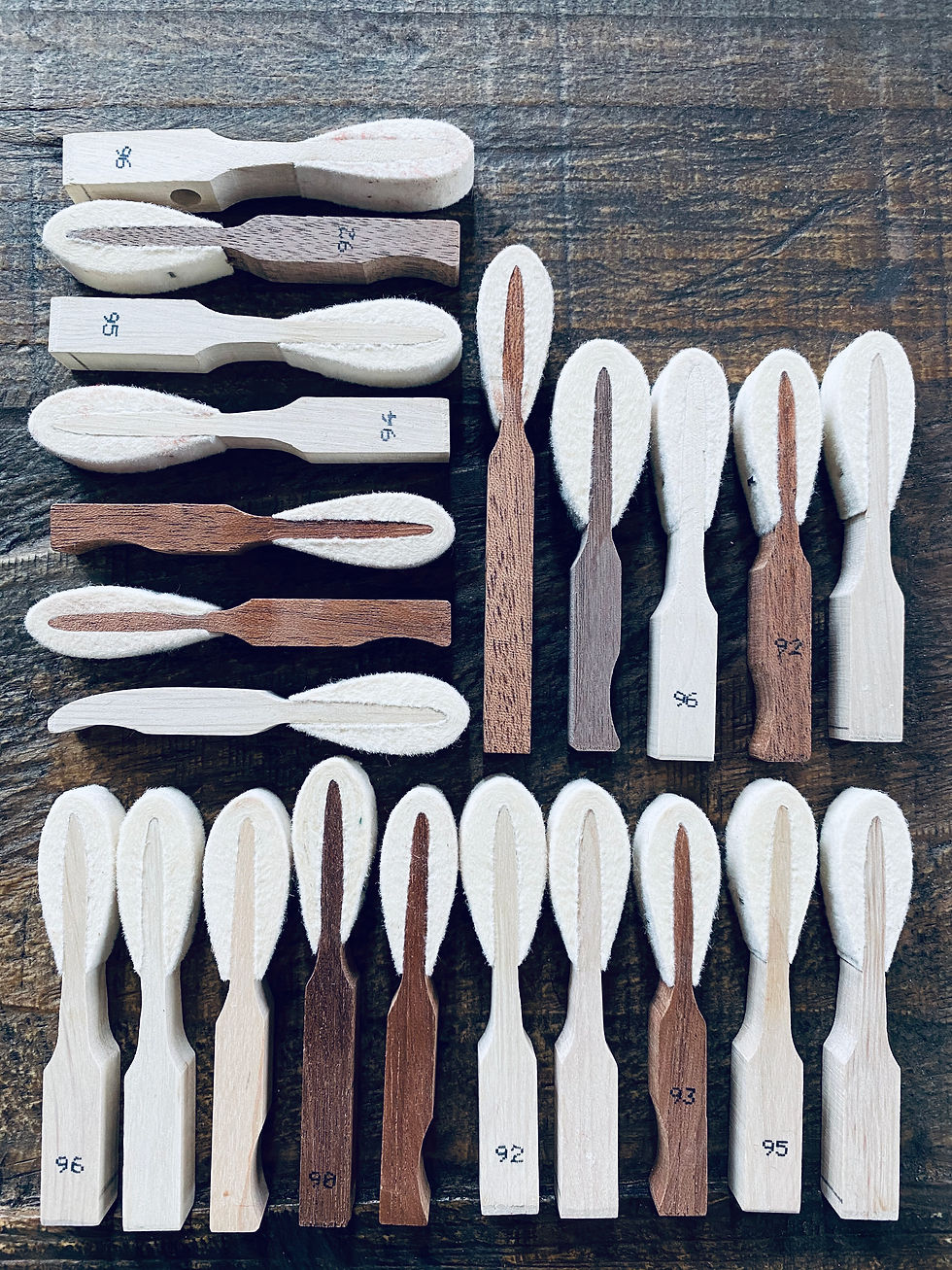Required Reading - Construction
- Gregory P. Cheng RPT

- May 20, 2020
- 4 min read
Updated: Jun 4, 2020
Gregory Cheng, RPT
When I was a young technician, one of my first jobs was working in a shop rebuilding pianos and prepping floor pianos. I was fortunate to work with a lot of well-educated piano technicians and rebuilders. Early on, I was intimidated by the knowledge and experience these people had and felt I needed to catch up - and catch up fast. My mentor pointed me to a few books I should read, which then dropped me into a rabbit hole of books and cataloged knowledge that I didn’t think was even available.
Theoretical book knowledge will never replace hands-on physical experience. However, the insights you gain from book knowledge will give you a richer, deeper understanding of piano technology, and will increase your skillset, enhance your hands-on experience, and set you a level apart from most technicians with factual, sight-able knowledge.
For the purposes of this article, I have categorized books into a few different categories: General Knowledge Books and Specialized Books. General knowledge books are well-rounded books that cover a wide range of topics within the book. These items are not necessarily summarized but are brief in their description. The specialized books dive deep into specific areas.

Theory and Practice of Piano Construction
By William B. White
This coupled with the Piano Tuning and Allied Arts by White is the perfect duo to get a 1917 piano technician up and going with a good understanding of the piano. Today in the 21st-century, the tuning book has been superseded by Igrecs book. However, I have yet to find a complimentary book as clear and concise as this one. While you are not going to be able to build a piano in 160 pages, White clearly explains why the piano is the way it is.
As we all know, the smaller a piano gets, the more compromises in the string scale we have to make either to string diameters or to wound strings starting at notes in the tenor. White states on page 49, "Take some physics out of the equation, using a 2-inch speaking length note 88, using the same diameter wire all the way down to C1, would produce a 24 foot piano, without the use of larger diameter wires, wound strings, and overstringing, not to mention physically impossible." White covers the acoustical laws of strings, the evolution of the modern piano, casting of the frame, equal temperament, and intonation.
I do not know of a book that is up to date and concise as this one. It amazes me every time I think about a book on piano construction that is just as relevant in principle today as it was when it was originally written 1906.

A Treatise on the Art of Pianoforte Construction
By Samuel Wolfenden
This book from 1916 is partnered with a supplement that was created in 1927. Again, an old book coming in at 168 pages before the index. Samuel Wolfenden focuses more on pattern making and string scale design. I don’t believe Wolfenden intended this for piano technicians alone, but piano designers and manufacturers. You have to contain the knowledge of materials, production, and engineering skill to use this book to build a piano.
By 21st-century standards, this book is out of date - however, the principles are the same when it comes to blueprints and string scale. Today we have Excel spreadsheet computer programs to help with math, back then, they had the slide rule. It is easy to say that this book isn’t necessary in understanding how to tune and regulate, the fact is the more you know the better. Having even a cursory knowledge of how pianos are built and why they are the way the are will lead to a deep appreciation and understanding of the piano you work on every day.

The Piano Hammer &
The Piano Key and Whippen
By Walter Pfeiffer

Once upon a time, so-and-so said that someone "rediscovered" the lost art of touch weight. This to me is a very uneducated statement considering the fact that manufacturers have been making pianos for a long time improving and refining touch weight and leverage. These set of books by Walter Pfeiffer outline what current quality manufacturers are doing today and show you why. With a quality action model and a few spare parts, you too can run through the experiments Pfeiffer demonstrates in these books. You will gain a first-person view of leverage, touch weight, friction, and a deeper understanding of why actions are manufactured the way they are.
It is through research in these books and experiments that manufacturers like Pitch Lock created the TouchRail. If you have questions about grand action geometry, the answers can be found here.

Piano Parts and Their Functions
Compiled by Merle H. Mason.
Illustrated by James E. Campbell
Piano Parts and Their Functions is a well-illustrated book that every piano technician needs in their shop for reference. Today, I use this to reference the exact names of different parts of the piano.
The title of the book says it all. Every section of the piano is broken down into individual parts, and each part then has an exploded diagram that clearly labels each part.
The book is very thorough and should be a staple in every piano technician’s shop or library.
Was this article helpful? Read more of Greg's required reads on the Tuning and Repair pages.



Comments